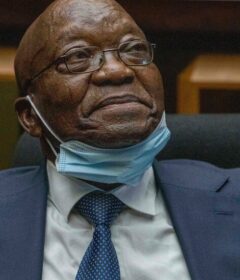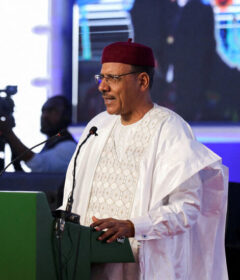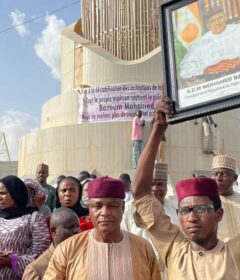Soweto, Once Unified Against Apartheid, Is Now Divided by Wealth
SOWETO, South Africa — Nomsa Victorino had a Lexus in her garage, a pool in her yard, eight bedrooms in her villa and a message for the world about her famous hometown. “Whatever people have in their mind about Soweto — that Soweto is a place for poor people — it’s not like that,” said Ms. Victorino, 50, sitting in one of her three sitting rooms. “It has changed drastically.”
Agnes Sehole had rats on her roof, candles for light, paraffin for heating and a message for the world about her famous hometown. “It’s getting worse,” said Ms. Sehole, 77, sitting in one of two rooms in her house in Soweto. “There’s nothing that I’ve experienced of the new South Africa.”
Soweto, once the country’s largest black township, was a symbol of the united resistance to the racist apartheid regime and home to the anti-apartheid leader Nelson Mandela. It is where the police killed at least 176 protesting schoolchildren during the Soweto Uprising of 1976, and where residents refused to pay the white government for rent, electricity and water during boycotts in the 1980s. To the outside world, Soweto stood for black solidarity.
Today, Soweto embodies the social and class divisions within South Africa’s black majority. It is a place of flashy cars and grand mansions, but also of shanty towns and high unemployment.
Soweto was established by the white government in the 1930s as a black ghetto on the southwestern fringe of Johannesburg (the name is an abbreviation of South Western Townships). Parts have changed markedly since apartheid ended in 1994 — and yet for many, it has failed to change fast enough.
Anger at hardship and inequality mutated in recent weeks into the scapegoating of immigrants. As xenophobic violence surged across South Africa, killing at least 12, Soweto was no exception. Looters ransacked several foreign-owned shops in the city in August.
Soweto is nevertheless a showcase for the progress that some black South Africans have made.
The area had no electricity and few paved roads for much of the apartheid era. But today on Vilakazi Street, where Mr. Mandela once lived, you can often spot a Porsche parked outside the road’s string of upscale restaurants.
There’s an annual wine festival, one of Africa’s largest malls and a microbrewery so successful that it was recently bought by Heineken.
The striking architecture of the Soweto Theater has replaced the crumbling apartheid-era stadium nearby as an emblem of Sowetan culture. The theater recently staged a play about an interracial romance, another about homophobia, and a musical about Ladysmith Black Mambazo, the gospel choir. Annual attendance has more than doubled in the past three years, to 50,000.
All of this creates “another narrative, a new narrative about black people, about African people,” said Nomsa Mazwai, the theater’s director. “The young people that walk out of here walk out of here thinking that they can do anything.”
At Moja Cafe, a bar-cum-restaurant in a neighboring district, rich Sowetans were buying beers that cost more than the country’s hourly minimum wage. In an area with as many as five million people, by unofficial estimates, there is an elite willing to pay for small luxuries.
“The buying power is there,” said Kutlwano Pitso, Moja Cafe’s owner, who said his richest clients regularly rack up drink bills of more than $650.
Two decades ago, Sowetans would have to drive elsewhere to eat fancy food, said Mr. Pitso, as a group of wealthy local politicians ate in the restaurant behind him. “Right now you can order it on Uber Eats.”
Yet a 10-minute drive away, in a district like Klipspruit, a very different picture emerges.
This is where Ms. Sehole lives, in a warren of unpaved alleys. Though most of Soweto’s roads were paved in the years after apartheid ended, pockets like this part of Klipspruit were forgotten.
The area is arguably in worse physical shape than when Ms. Sehole first moved here in 1966. Back then, she at least had a view from her back door. Now, a housing shortage has led many of her neighbors to build as many as four shacks to rent out in their backyards. That has created a cramped and overcrowded neighborhood — and turned Ms. Sehole’s street into a narrow passageway.
For several weeks this year, she was forced to use candles and paraffin when the whole area’s power supply was cut off after a high proportion of residents defaulted on their electricity payments.
Should Electricity Be Free?
“Did you say things have changed?” asked Seth Mazibuko, sarcastically. As a 15-year-old in 1976, Mr. Mazibuko was a leader of the student uprising that made Soweto famous around the world, and that led the state to murder so many of his friends and schoolmates.
Life has changed since then. A museum and a memorial stand near where the first students were killed. Jailed under apartheid, Mr. Mazibuko is greeted as a hero as he strolls down the streets where his friends were shot. On a recent afternoon, Sowetans regularly rushed up to hug him.
But Mr. Mazibuko said the economic dividends of this freedom have been shared far less equally than he had hoped.
Much of the economy and land is still controlled by the white minority. Many of the country’s new leaders — several of whom fought alongside Mr. Mazibuko against apartheid — have enriched themselves without taking enough people with them.
Unemployment remains almost as high as it was in 1994; over half of people younger than 35 are jobless. The black middle class has grown, but is still only about 10 percent of the total black population, according to the University of Cape Town’s research.
“The tree of liberation that we watered with our blood — we’re not enjoying the fruit of that tree,” said Mr. Mazibuko, a former school principal. “We’re not even enjoying the shade of that tree. But the children of those comrades that we were with, and who are now in Parliament — they are enjoying the fruit and the shade.”
At the heart of this dichotomy is Soweto’s electricity crisis.
In the 1980s, Sowetans refused to pay for services like electricity as part of a multipronged campaign against apartheid spearheaded by, among others, Cyril Ramaphosa, the current South African president.
After the end of apartheid, this culture of nonpayment continued. Today, more than 80 percent of Sowetans do not pay for electricity.
But while nonpayment unified Sowetans in the 1980s, today it helps divide the country’s leaders and their base.
“The days of boycotting payment are over,” Mr. Ramaphosa said in a speech in June. “This is now the time to build. It is the time for all of us to make our own contribution.”
But many poor South Africans believe electricity should be free, or at least heavily subsidized, particularly in areas like Soweto where unemployment is so high. They feel they are paying the price for the corruption of Mr. Ramaphosa’s party, the African National Congress, whose former leadership is enmeshed in multiple graft scandals, including within the electricity sector.
And they feel betrayed: The A.N.C. is perceived (not always fairly) to have presented free services as the population’s reward for defeating apartheid.
“We used to walk together, we used to sing and praise God together,” Mr. Mazibuko said of Mr. Ramaphosa. “Has Cyril forgotten that he once stayed in a house where there was no electricity?”
In a Flashy Bar, Debating Opportunity
Soweto’s electricity standoff, then, is more than an argument about how to pay for energy. It’s at the heart of a debate about the nature of democracy in South Africa.
It poses questions about the post-apartheid political settlement, and whether it did enough to redistribute economic power and opportunity. And it kindles a disagreement about the obligations of government: Is its role merely to create opportunity for its citizens, or to provide them with a more comprehensive package of help and protection?
In one of Soweto’s flashiest bars, on a chilly evening in late July, a banker and a businessman discussed this very question over a beer. Both had grown up in Soweto, and both had done well enough to move elsewhere in Johannesburg. Both still liked to return on weekends to ride their motorcycles and to see their friends.
The banker, Dumisani Bengu, felt that anyone who tried hard enough could succeed in the new South Africa.
“We all had the same opportunities, why didn’t you take yours?” Mr. Bengu, 47, said to an imaginary critic. “We all grew up in the same space, but I persevered at school.”
The businessman, Bongani Moyo, disagreed. Opportunity is not distributed equally, he said.
“There are guys that got opportunities, yes,” said Mr. Moyo, 45, who runs a construction firm. “But some of us also had to find our way and get ourselves out of a rut, and others didn’t get an opportunity at all.”
Thabo Jobo contributed reporting.
Source: Read Full Article



